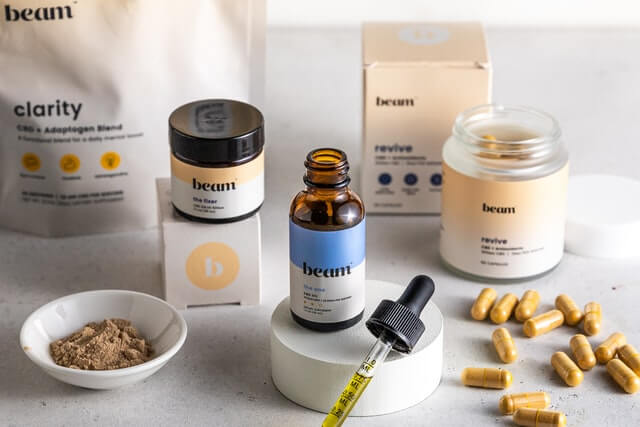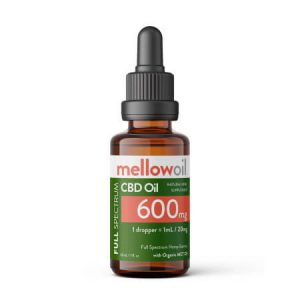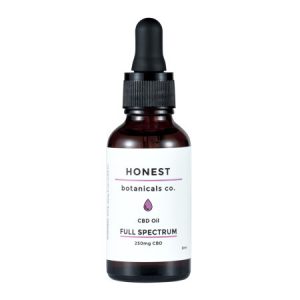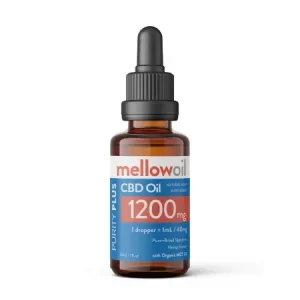What is CBD? Everything Canadians Need To Know About The Cannabidiol Molecule In 2024
CBD Basics | How CBD Works | CBD Products
The hemp plant is often also called Cannabis Sativa. This plant contains numerous cannabinoids and the one with the highest content is CBD.
The use of the hemp plant by humans can be traced back to many centuries ago. Some communities used it for religious purposes, others for producing clothes or ropes. Nowadays, the hemp plant is getting increasingly popular due to its extract that is high in CBD and varieties of products sold in Canadian shops. But what is CBD exactly?
CBD Basics
Below, we’ll give you a small introduction to the CBD molecule. We’ll cover what it is, where it comes from, and the main differences with the other popular cannabinoid THC. It’s important to note that cannabidiol is just one of the hundreds of components of the hemp plant, although it’s currently one of the most sought after.

What Is The Cannabidiol Molecule?
Cannabidiol, which is often abbreviated to CBD, is one of the 113 known cannabinoids from the hemp plant. This plant is also commonly called Cannabis Sativa, and it’s composed of phytocannabinoids. 40% of the plant’s extract is composed of CBD.
The molecular formula of cannabidiol is C21H30O2. It’s a crystalline non-intoxicating cannabinoid, unlike the second most common phytocannabinoid from the hemp plant, THC.
CBD can be ingested in numerous ways, such as orally, topically, or through inhalation. Scientific studies about cannabidiol’s properties have started back in the 1970s, and although there’s still a long way to understand its true potential, some reports indicate that CBD is:
- Analgesic
- Anti-inflammatory
- Anxiolytic
- Antineoplastic
- Chemopreventive
Where Do Cannabinoids Come From?
Cannabinoids can be found in the cannabis plant, and those of vegetable origin are often referred to as phytocannabinoids. Humans also produce cannabinoids, which are called endocannabinoids.
As explained above, CBD and THC are the two phytocannabinoids that have a higher concentration in the hemp plant. Nevertheless, 111 other cannabinoids have been isolated from the plant’s extract so far.
Other cannabinoids include:
- Cannabigerol (CBG)
- Cannabichromene (CBC)
- Tetrahydrocannabinol (THC)
- Cannabinol (CBN)
- Cannabinodiol (CBDL)
- Cannabicyclol (CBL)
- Cannabielsoin (CBE)
- Cannabitriol (CBT)
For commercial purposes, cannabinoids tend to be categorized by the psychoactive effects they cause. As an example, THC, CBN, and CBDL cause different degrees of psychoactivity, which is one of the reasons why these cannabinoids are usually only found in trace amounts in CBD extract.
CBD vs. THC: The Differences
Cannabidiol (CBD) and delta-9-tetrahydrocannabinol (THC) are the two most common cannabinoids found in the hemp plant. As such, these two compounds are often mentioned together, which might lead some people to believe they are similar.
The reality is that these two cannabinoids are nothing alike, and each has its own set of properties. For instance, THC is a psychoactive cannabinoid, which gives those who consume it the sensation of feeling “high”. On the other hand, CBD doesn’t cause psychoactive effects, and in fact, has been shown to possess the following properties:
- Anti-psychotropic
- Antioxidant
- Anti-inflammatory
- Antimicrobial
- Anxiolytic
- Neuroprotective
- Anticonvulsant
How Can CBD Be Extracted?
To use CBD, it must first be extracted from the hemp plant. There’s a wide variety of extraction methods that can be used to retrieve CBD from the hemp plant, with some being more efficient and clean than others.
The most common extraction methods for industrial purposes are:
- Supercritical CO2: this is the most commonly used method in industrial production, and produces a safe and clean extract.
- Chemical solvent extraction: it’s possible to use butane, ethanol, or hexane to extract CBD. It’s more affordable than the one above but may leave some traces of solvent in the extract.
How Does CBD Work?
CBD works by interacting with the endocannabinoid system, which operates by binding endocannabinoids to the CB1 and CB2 receptors.
When consumed, CBD doesn’t directly bind to these receptors, but it plays an important role in helping them reach their purpose. This happens because CBD helps these receptors work better and increase the homeostasis (balance) of the body.
CBD is still an understudied compound, however, some research has shown that although it works well by itself, its effects are improved when taken at the same time as other cannabinoids – this causes the entourage effect.
The most common effects of CBD are related to:
- Pain management
- Improved sleep patterns
- Decreased nausea
How Can CBD Be Used?
Cannabidiol can be used in a myriad of ways, as several different products that contain CBD are available for sale.
These products can be ingested in different ways, depending on the type of product itself:
- Oral ingestion: CBD oils and tinctures, CBD edibles and beverages
- Topical application: CBD creams, lotions, salves, oils
- Inhalation: CBD vape pens, CBD e-liquid
We recommend that you always consult your doctor before ingesting any type of cannabidiol-based product. Although this compound was deemed safe by the World Health Organization, it might not be indicated for everyone.
Moreover, CBD might negatively interact with prescription drugs, particularly those that shouldn’t be taken with grapefruit.

References
Alline Cristina Campos, Fabricio Araújo Moreira, Felipe Villela Gomes, Elaine Aparecida Del Bel, Francisco Silveira Guimarães, Multiple mechanisms involved in the large-spectrum therapeutic potential of cannabidiol in psychiatric disorders, Philos Trans, 2012
https://www.ncbi.nlm.nih.gov/pmc/articles/PMC3481531/
Nicola Black, Emily Stockings, Gabrielle Campbell, Lucy T. Tran, Dino Zagic, Wayne D. Hall, Michael Farrell, Louisa Degenhardt, Cannabinoids for the treatment of mental disorders and symptoms of mental disorders: A systematic review and meta-analysis, Lancet Psychiatry, 2020
https://www.ncbi.nlm.nih.gov/pmc/articles/PMC6949116/



